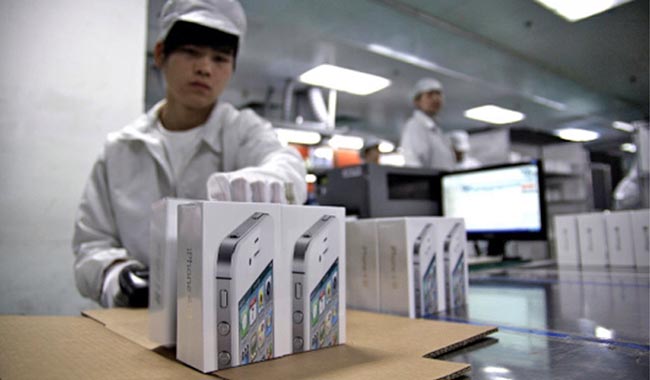
¿Por qué una cadena de suministro sustentable es la clave para mantenerse competitivo?
Apple's latest supply chain audit report shows its push for more rigorous environmental standards and renewable energy production across its supply chain is working: suppliers in 2015 diverted more than 73,000 metric tons of waste from landfills and saved more than 3.8 billion gallons of freshwater.
Other companies should take note, and look for ways they can improve their supply chain sustainability to stay competitive.
The tech giant conducted 640 audits across its global supply chain last year - a 1 percent increase from 2014 and a 41 percent increase from 2013 - in its efforts to improve environmental sustainability, working conditions and transparency.
As an example: Foxconn Zhengzhou, one of Apple's final assembly facilities for iPhones, partnered with Underwriters Laboratories to help the Chinese plant improve its waste management. Working with UL, the company discovered 80 percent of the facility's total waste was generated by production, so local managers created a system to increase recycling and worked with parts vendors to improve packaging. The efforts allowed Foxconn Zhengzhou to divert 40 percent of previously landfill-bound waste for recycling and sent much of the remaining waste to waste-to-energy facilities.
As of early 2016, Foxconn Zhengzhou is 96 percent landfill-free and has set a goal to be 100 percent landfill free by the end of this year.
Also in the report: in the first year of the company's energy efficiency program, suppliers at 13 sites prevented more than 13,800 metric tons of carbon emissions through replacing outdated or inefficient heating, cooling, and lighting systems, repairing compressed air leaks, and recovering and redirecting waste heat.
Last year 100 percent of process chemicals at all final assembly facilities were free of "Apple-prohibited substances" - these are hazardous chemicals identified by Apple's Regulated Substances Specification list that the company prohibits or limits in manufacturing. Apple says now it's working to identify these chemicals at its non-final assembly facilities.
"We're proud of the progress we've made so far," writes Apple COO Jeff Williams, in a letter at the beginning of the supplier responsibility report. "Yet even as you read this, Apple continues to address challenges throughout the supply chain. We are openly working with industry partners, governments, NGOs, and others who share our vision of improving lives and caring for the environment."
The news of Apple's supply chain audit has - or should have - other companies looking for ways that they can work with suppliers to improve their environmental performance. As the same time, growing demand for natural resources like water, minerals and oil puts a stain on supply, making it harder for companies that want to implement sustainable practices and materials in the supply chain.
Despite the challenges involved with improving environmental sustainability and transparency in the supply chain, Hans Thalbauer, senior vice president of extended supply chain management at global software developer SAP, says sustainability is becoming an increasingly important aspect in business management.
In an interview with Environmental Leader, Thalbauer said there are three major components companies should look at to improve supply chain sustainability: raw materials used, the treatment of people who make the products and supply the services - as well as how operations affect people in the local communities - and overall compliance with laws and regulations as well as consumer and investors' expectations.
"It is important to understand what raw materials are being use, if the raw material is scarce and if so, what would be the impact if this material was not available going forward," Thalbauer says. "Water, for example, is driving a lot of innovation in the entire manufacturing sector, with companies trying to reduce water consumption during production. But it also goes back to innovations that use less water for the product itself. So especially for the food and chemical industries, a lot of products are emerging in the market place that have reduced water content in the product itself."
Reducing emissions and waste, and conserving water are easier when confined within a company's own walls. But leading companies can take a page from Apple's playbook and continue pursing environmental sustainability goals across the supply chain.
Says Thalbauer: "Sustainability as a topic is not new, it has been discussed now for more than a decade now, however in talking with many companies around the world we see sustainability is coming up higher in the list of extended supply chain priorities."
Fuente: environmentalleader.com

